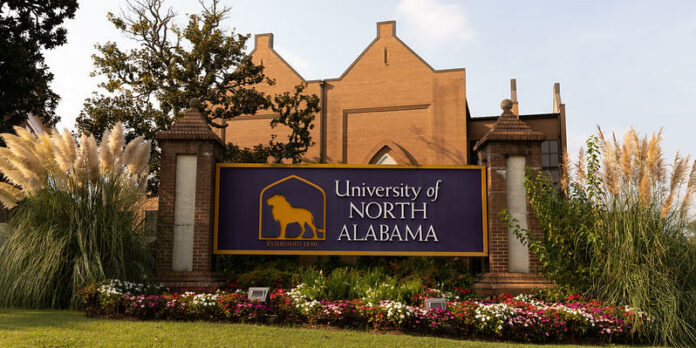FLORENCE — The University of North Alabama is 208 miles from Montgomery – and from the budgetary process that determines how much money it gets from the state of Alabama each year.
Project 208, initiated by university President Ken Kitts in 2017, aims to make UNA a priority for state legislators by showing them the university is a good investment of taxpayer dollars.
Jason Cochran, executive director of Governmental Relations & Economic Development at
UNA, said, “The university is doing a better job of making sure legislators are aware of the
benefits, such as growth, jobs, and a high-quality workforce ready to be hired.”
Why did Kitts see a need for Project 208 in the first place?
“After seeing the inequality in state appropriations and what other institutions were receiving, President Kitts created Project 208,” Cochran said. “Project 208 comes from the proximity of UNA to Montgomery. It started as a way to close the funding gap between UNA and the 13 other higher education institutions in the state.”
Kitts noted that the impact of the funding deficit extends to the region.
“Over the years, UNA has missed out on hundreds of millions of dollars that should have come to this campus,” he said. “And that translates to fewer jobs in northern Alabama, fewer contracts with local businesses, and less tax revenue for local governments.”
Over the past five years, Project 208 has yielded good results. The state appropriation for fiscal year 2017 was $28.1 million. For FY 23, the appropriation will be $45.1 million.
“When the 2022 state legislative session ended, we recorded another strong finish in Montgomery,” Kitts said. “Our university received an increase of 12.8 percent, which
translates into just over $5 million, in new recurring funding for the next fiscal year that began on Oct. 1.”
While university officials appreciate the increase in appropriations, Kitts said a gap remains that separates UNA from the peer institution closest in funding by about $5 million.
“It is unfortunate that any deficit of this magnitude continues to exist,” Kitts said. “Our
commitment is that we will continue to work with state officials next year and beyond in an effort to achieve funding parity for UNA.”
In past years, Cochran noted, the state covered about 75 percent of higher education institution budgets while tuition accounted for 25 percent. Those numbers flipped as cuts to higher ed became reality in previous state administrations.
UNA’s Board of Trustees voted to raise tuition by $20 per credit hour for the 2022-23 academic year in order to help mitigate the ongoing impact of inflation as well as multiyear budget deficits.
“While we have made real progress through Project 208 to secure additional funding from the state, we still receive less support than our peers on a per-student basis,” Kitts said.
The university continues to set enrollment records and be recognized as one of the top public schools in the region, including surpassing 10,000 students enrolled, being named as a Top 10 public regional university in the South, and setting fundraising records.
“UNA is showing state and local legislators that they will get a good return on investment by supporting the university,” Cochran said. “We are growing, adding critical educational programs, and taking a leadership role in workforce development.
“We have seen positive momentum and it’s clear that legislators are beginning to understand the job we are doing and seeing the results. There is still room to grow and we are moving closer to funding equity each year. Everyone here – faculty, staff, students – deserves credit for the success of Project 208.”
Don’t miss out! Subscribe to our email newsletter to have all our smart stories delivered to your inbox.



